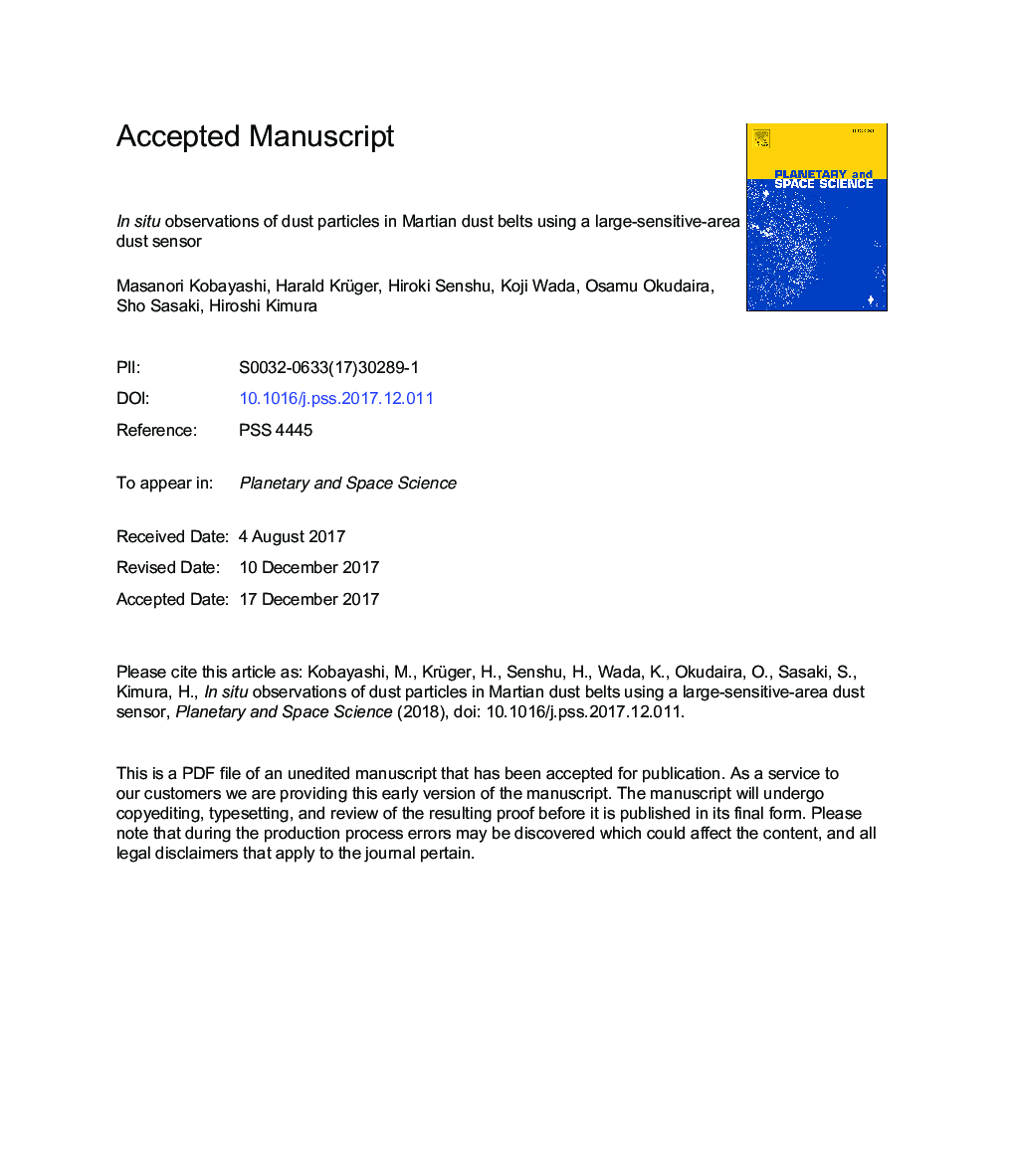| کد مقاله | کد نشریه | سال انتشار | مقاله انگلیسی | نسخه تمام متن |
|---|---|---|---|---|
| 8142173 | 1523884 | 2018 | 19 صفحه PDF | دانلود رایگان |
عنوان انگلیسی مقاله ISI
In situ observations of dust particles in Martian dust belts using a large-sensitive-area dust sensor
ترجمه فارسی عنوان
مشاهدات ذرات گرد و خاک در تسمه های گرد و غبار مریخ با استفاده از یک حسگر گرد و غبار حساس به محدوده
دانلود مقاله + سفارش ترجمه
دانلود مقاله ISI انگلیسی
رایگان برای ایرانیان
کلمات کلیدی
حلقه مریخ، حسگر بزرگ منطقه تشخیص، گرد و غبار بین پلاتین، اکتشافات ماه مریخ،
موضوعات مرتبط
مهندسی و علوم پایه
علوم زمین و سیارات
فیزیک زمین (ژئو فیزیک)
چکیده انگلیسی
In order to determine whether Martian dust belts (ring or torus) actually exist and, if so, to determine the characteristics of the dust, we propose a Circum-Martian Dust Monitor (CMDM) to be deployed on the Martian Moons Exploration (MMX) project, in which JAXA plans to launch the spacecraft in 2024, investigate Phobos and Deimos, and return samples back to Earth. The CMDM is a newly developed instrument that is an impact dust detector. It weighs only 650â¯g and has a sensor aperture area of â¼1â¯m2, according to the conceptual design study. Detectable velocities (v) range from 0.5â¯km/s to more than 70â¯km/s, which will cover all possible dust particles: circummartian (low v), interplanetary (mid v), and interstellar (high v) particles. The measurable mass ranges from 1.3â¯Ãâ¯10â9â¯g to 7.8â¯Ãâ¯10â7â¯gâ¯at vâ¯=â¯0.5â¯km/s. Since the MMX spacecraft will take a quasi-circular, prograde orbit around Mars, the CMDM will be able to investigate particles from Phobos and Deimos with relative velocities lower than 1â¯km/s. Therefore, the CMDM will be able to determine whether or not a confined dust ring exists along Phobos' orbit and whether an extended dust torus exists along Deimos' orbit. It may also be able to clarify whether or not any such ring or torus are self-sustained.
ناشر
Database: Elsevier - ScienceDirect (ساینس دایرکت)
Journal: Planetary and Space Science - Volume 156, July 2018, Pages 41-46
Journal: Planetary and Space Science - Volume 156, July 2018, Pages 41-46
نویسندگان
Masanori Kobayashi, Harald Krüger, Hiroki Senshu, Koji Wada, Osamu Okudaira, Sho Sasaki, Hiroshi Kimura,
